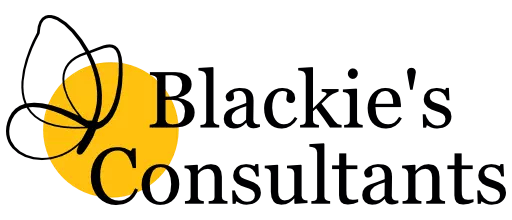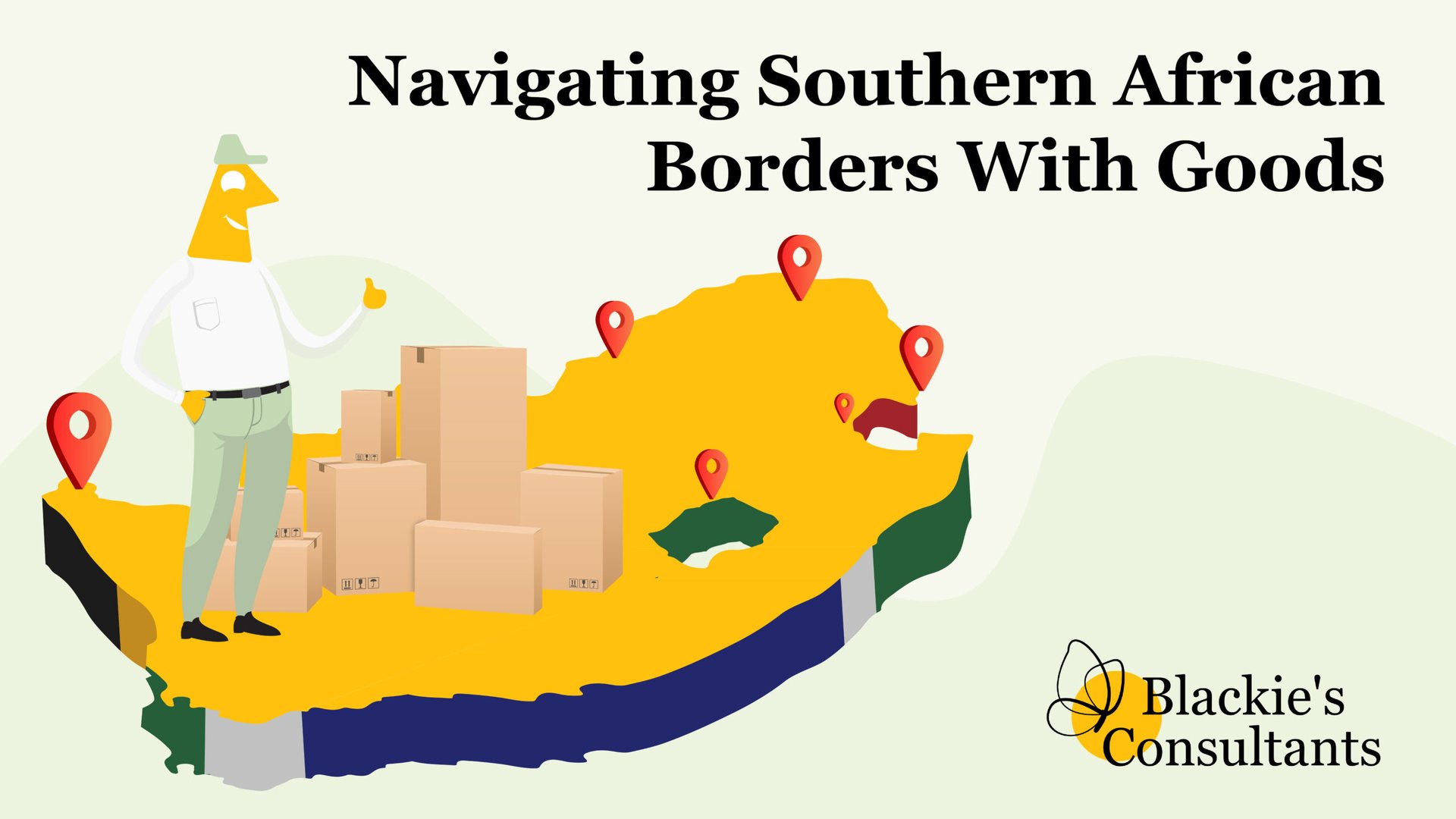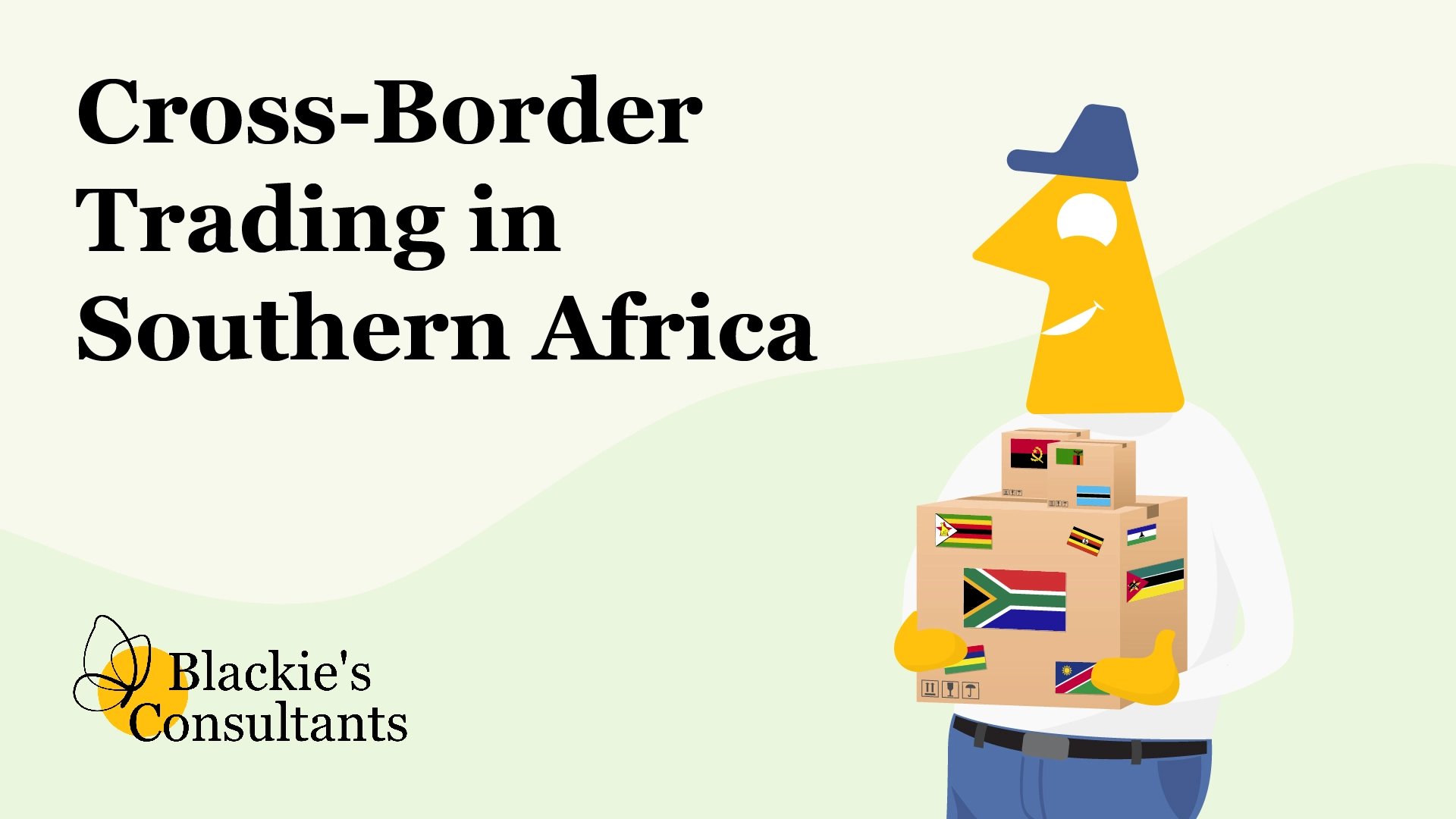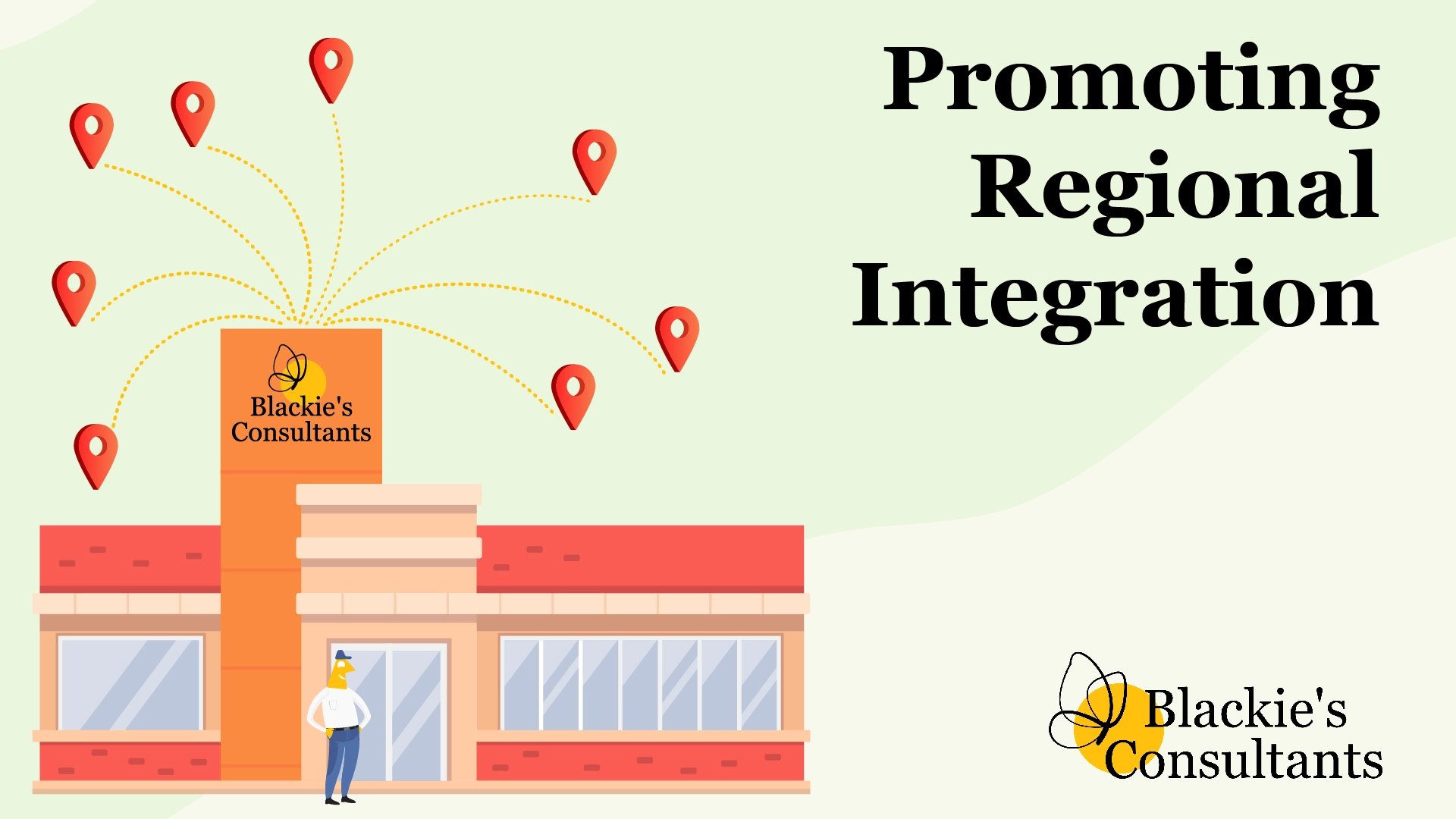Crossing borders with goods can be a complex process, especially in the diverse region of Southern Africa. From paperwork to inspections and customs regulations, understanding the basic steps involved is crucial for smooth and hassle-free border crossings.
Blackie’s Consultants are highly specialised and fully licensed customs brokers and consultants who offer guidance and trade facilitation between yourself and a foreign entity. This article will outline the fundamental procedures and basic considerations when crossing a border with goods in South Africa, Lesotho, Botswana, Eswatini and Namibia.
Research And Planning
Thorough research and planning are essential before embarking on a journey across a Southern African border with goods. Familiarise yourself with the specific requirements, regulations, and procedures of the countries you’ll be entering and exiting. Check visa requirements, permitted goods, customs duties, and any applicable restrictions or prohibitions. You can also learn more on our YouTube channel.
Documentation And Paperwork
Accurate and up-to-date documentation is crucial for crossing borders with goods in Southern Africa. The following documents are typically required:
- Bill of Lading or Waybill: This document confirms the shipment of goods and contains important details such as the consignor, consignee, nature of the goods, and their value.
- Commercial Invoice: A detailed invoice that provides information about the goods, their quantity, value, and other relevant commercial details.
- Packing List: An inventory of the goods transported, including their description, quantity, and weight.
- Import/Export Permits: Some goods may require specific permits or licenses to cross borders legally. It is essential to obtain these permits in advance.
- Customs Declarations: Formally declaring the goods to customs authorities is necessary. Be prepared to fill out the appropriate customs forms accurately.
- Vehicle Documentation: If you are transporting goods using a vehicle, ensure you have all the necessary documents, including ownership papers, vehicle insurance, and roadworthiness certificates.
Customs Procedures And Inspections
When crossing a Southern African border with goods, customs procedures and inspections play a significant role. Here are some key steps involved:
- Preparing for Inspection: Ensure your goods are properly packed, labelled, and organised. Make sure all relevant documentation is easily accessible to customs officers.
- Customs Clearance: Present your documentation to the customs officials and follow their instructions. Pay any applicable duties or taxes promptly.
- Goods Inspection: Depending on the nature of the goods, customs authorities may conduct physical inspections. Cooperate fully and provide access to the goods if requested. Be prepared for delays during this process.
Health And Sanitary Checks
In Southern Africa, health and sanitary checks are essential for certain goods. This step aims to prevent spreading diseases, pests, and harmful substances. Some common checks include:
- Plant and Animal Health: Agricultural and food products are subject to inspection to ensure they comply with import regulations. These checks aim to prevent the introduction of pests, diseases, and invasive species.
- Veterinary Certificates: If you are transporting live animals or animal products, you may need to obtain veterinary certificates to ensure compliance with health standards.
- Health Certificates: Some goods, such as pharmaceuticals or medical devices, may require health certificates or approvals from relevant authorities.
Security Checks
Given the global concerns about security and illegal activities, security checks are integral to crossing Southern African borders. These checks are carried out to ensure the safety of passengers, goods, and the general public. Be prepared for the following security procedures:
- Vehicle Searches: Border officials may conduct searches of vehicles to identify any illegal goods or prohibited items.
- X-ray Scanning: Large shipments may be subjected to X-ray scanning to detect any hidden or undeclared goods.
- Personal Baggage Inspections: Travelers may undergo personal baggage inspections to ensure compliance with regulations and to prevent smuggling.
Walking With Blackie’s
Crossing borders with goods in Southern Africa involves several important steps, and understanding the procedures is vital for a smooth journey. Thorough research and planning, accurate documentation, compliance with customs regulations, and cooperation during inspections are key to successfully navigating the borders.
Blackie’s Consultants complete border clearance documentation with precision and care. They reduce the total cost of logistics operations by reducing the red tape associated with crossing borders.
Blackie’s brokers assist in submitting the paperwork needed to move goods across borders to the relevant authorities with speed and accuracy. Blackie’s can help you reduce the time it takes to receive clearance to proceed to the border is from an average of 48 hours to 8 hours!
Request assistance from Blackie’s Consultants by completing a clearance instruction. Blackie’s will use your clearing instruction to classify the goods being transported across borders correctly. Contact Blackie’s.





